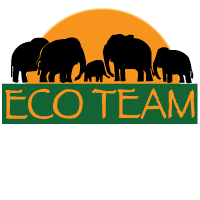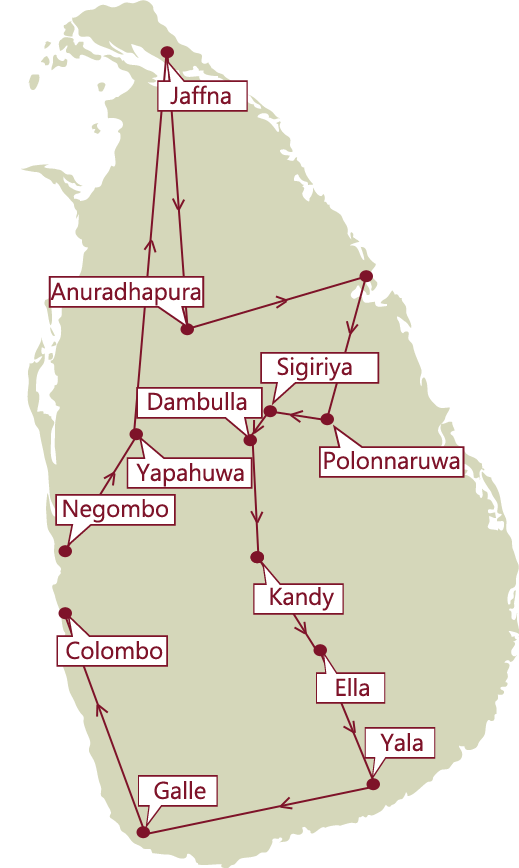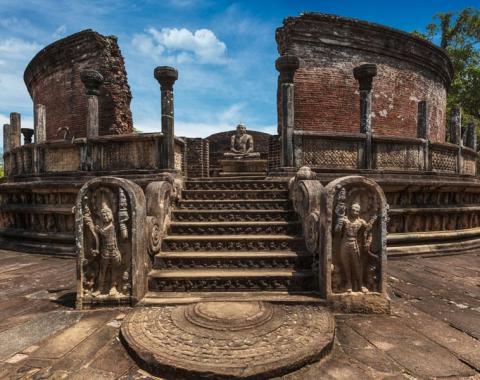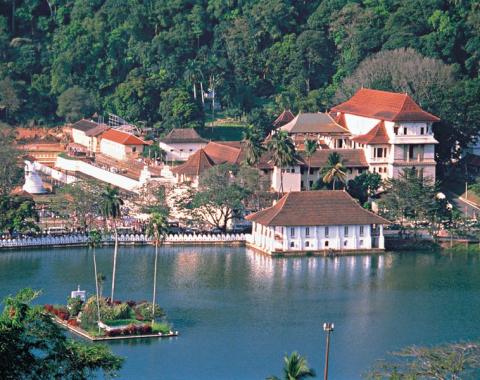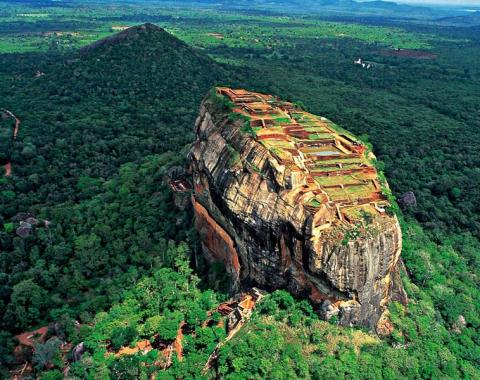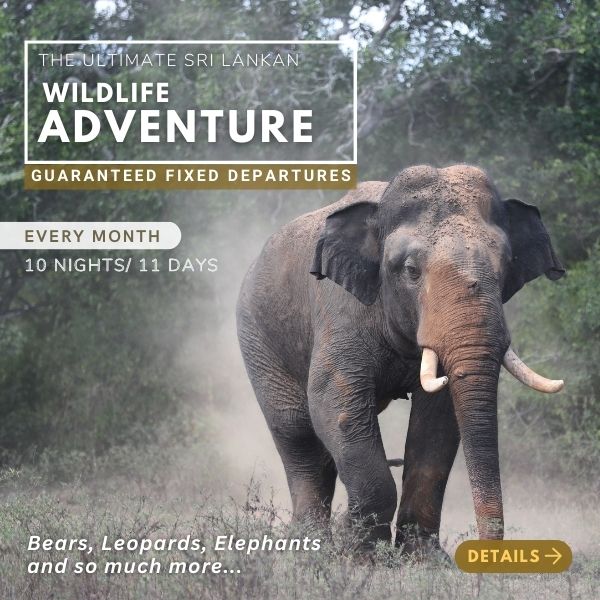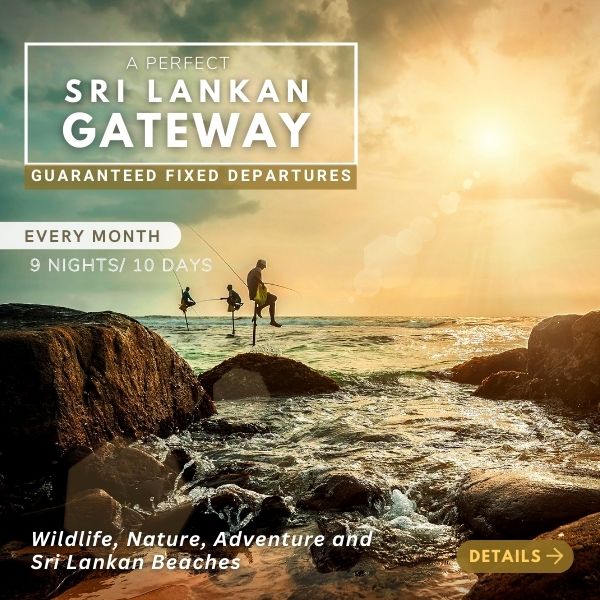Detailed Itinerary
Day 01 to Day 03
Day 1 - Airport – Negombo
SCHEDULE
-
On arrival at the Bandaranaike International Airport, meet and greet & transfer to Negombo
-
Check in to the hotel (check in time after 12. 30p.m)
-
Evening - enjoy a short visit to the neighbouring communities with your guide (Depending on your arrival time)
-
Dinner and overnight stay at your hotel in Negombo
Less than 5 kilometres from the airport is the fishing coastal city of NEGOMBO. Captured by colonisers starting in the 17th century, its priceless cinnamon trees was a gold mine for the likes of the Dutch, Portuguese and the British. Today, regal churches and colonial styled buildings reflect a bygone era, amidst the hustle and bustle of a vibrant fishing city, blessed by a beautiful lagoon and canals to explore the place and of course the beach - warmly embraced by the Indian Ocean.
Day 2 - Negombo – Yapahuwa – Anuradhapura
SCHEDULE
-
Early morning - visit to an authentic fish market in Negombo and interaction with a vibrant and busy fishing community
-
Leave for Anuradhapura via Yapahuwa after breakfast
-
Visit Yapahuwa Historical Site
-
Continue to Anuradhapura and check in at the hotel
-
Overnight stay at the hotel in Anuradhapura
En route to the cultural triangle - the ancient cities of Kandy, Anuradhapura and Polonnaruwa - we will take you to the Rock Fortress of YAPAHUWA, the capital city for King Bhuvanekabahu, in the 13th century. Chosen as his capital city and as a strategic location to defend his kingdom and the Sacred Tooth Relic from a Dravidian invasion from South India, King Bhuvanekabahu built a palace and a temple in the backdrop of a formidable rock. Along with a shrine, there is a cave that houses ancient inscriptions at the base of the rock. Following the death of King Bhuvenakabahu in 1284, Yapahuwa succumbed to the the Pandyans of South India, who invaded Sri Lanka once again, and succeeded in capturing Sacred Tooth Relic. Thereafter, Yapahuwa was largely abandoned and inhabited by Buddhist monks and religious ascetics.
The citadel of Yapahuwa is considered a monumental archeological site to visit.
Day 3 - Anuradhapura - Jaffna
SCHEDULE
-
Leave for Anuradhapura Railway Station after breakfast
-
Get on to the Intercity Express Train to Jaffna (your chauffeur will stay in Anuradhapura)
-
A local driver will pick you up at Jaffna Railway Station and take you to a hotel for lunch
-
City Tour in Jaffna enjoying the local food including Rio Ice Cream – popular in Jaffna
-
Dinner and overnight stay at the hotel in Jaffna
JAFFNA, or Nagadipa, is first mentioned in the Mahawamsa Chronicles in 6BC, when Buddha made his second journey to the island. A peninsula connected by a shallow lagoon to the rest of Sri Lanka and separated from India by the Palk Straits. Point Pedro with its lighthouse, marks the northernmost point of Sri Lanka. The Manalkadu sand dunes, is a mini desert situated close to the town of Point Pedro. Densely populated, Jaffna offers a landscape of arid sands and palmyrah trees, culture and hospitality - that is unique.
Day 04 to Day 06
Day 4 - Jaffna
SCHEDULE
-
Breakfast at the Hotel
-
Visit to Delft island in the morning
-
City tour in Jaffna in the evening
-
Dinner and overnight stay at your hotel in Jaffna
The DELFT ISLAND has historically been a strategic location from the time of the Chola Dynasty – the ruins of a temple and other sites testify their presence from over thousands of years ago.. Furthermost from Jaffna town, from the Chola Dynasty. It is located about 30 kilometers away from the mainland. The island is surrounded by shallow waters and reefs making it difficult for ships to approach – making it a prized possession during the Portuguese, Dutch and British colonial periods, as it was hard to attack the island.
A pigeon house made of coral constructed by the Portuguese and Dutch can be seen, along with the “Devil’s Well”. This well is the source of drinking water for the entire island’s population. It gets its name from the the bottom of the well which cannot be seen and so people have assumed it to be - the devil's mouth.
Back on the peninsula, the Nallu Kandasamy Kovil built in the 18th century should not be missed: with its beautifully decorated corridors and water tank. Interestingly, it contained a shrine dedicated to an Islamic Sufi saint. Unfortunately, in 1749, the vault of the Islamic saint was removed by the Hindus. Close to Kankesanthurai are the Hot Springs which are believed to have therapeutics powers.
Day 5 - Jaffna - Anuradhapura
SCHEDULE
-
Breakfast at the hotel in Jaffna
-
A brief Tour in Jaffna
-
Check out from the hotel around noon and transfer to Jaffna Railway station to connect with the train to Anuradhapura.
-
Your Chauffeur will pick you up at Anuradhapura Railway Station and transfer you to the hotel in Anuradhapura.
-
Overnight stay at the hotel in Anuradhapura
Our next stop is recognised as one of the oldest inhabited cities in the world dating way back to 377 BC; ANURADHAPURA is also a UNESCO World Heritage Site. Favoured as the capital city by several kings, with King Pandukabhaya planning its layout, as early as the 4th century. History shows how this momentum continued until the end of the 12th century. The ruling dynasties left a legacy of architectural and engineering achievements: monasteries, temples, baths and palaces were structures familiar to society at the time.
Mirisawetiya, Ruwanweliseya and Jetavanaya are the three stupas of Anuradhapura which have etched their place in ancient history, alongside the Pyramids of Egypt and South America. Built between 161 BC and 331 AD, these monuments were constructed using extremely heavy and large stones. Ruwanweliseya is considered the tallest dagoba ins Sri Lanka,
The temple of the Sri Maha Bodhi (temple of the holy Bo-tree) is also found in this historical city. The Sri Maha Bodhi Bo tree was grown from a branch of the tree, under which Lord Buddha attained enlightenment while he was meditating - more than 2500 year ago.
Day 6 - Anuradhapura – Mihintale – Trincomalee
SCHEDULE
-
Breakfast at the hotel
-
Proceed to Trincomalee via Mihintale
-
Visit Mihintale Temple & continue to Trincomalee
-
Check in at the hotel
-
City Tour in Trincomalee in the evening
-
Overnight stay at the hotel in Trincomalee
A grand stairway of 1840 steps made of granite slabs leads to the summit of a rock called the Aradhana Gal (The Rock of Invitation) in MIHINTALE. This is the place where Mahinda, son of the Indian Emperor Ashoka called out to Lankan King Devanampiyatissa to prevent him from shooting a deer. Thereafter he conveyed the message of Buddhism - marking the birth of Buddhism in Sri Lanka. There is a 32-cell rock hewn cave built by Devanampiyatissa for Mahinda, who lived here in the jungle for 48 years while spreading the message of peace. Mihintale is dotted with various shrines such as the Mahinda Maha Seya which is the largest stupa here, along with rock boulders and sacred caves, used by monks for meditation and visited by devotees.
The historically known town of Gokanna, later called Koddiyar (the Fort by the River) is today’s TRINCOMALEE. On the North Eastern coast of the island, over 250 kilometres away from Colombo, it is acknowledges as one of the finest natural deep-water harbours in the world.
A sea port in ancient Lanka since 543 BC, it was where Indo-Aryan immigrants landed and formed a major settlement. The kings during the Anuradhapura and Polonnaruwa Kingdoms recognised the strategic importance of Trincomalee for the island’s seaborne trade, invariably this meant Trincomalee would become a flashpoint. Centuries later when Danish ships arrived in 1624, the Kandyan King Rajasinghe II refused to allow them to stay. But the Portuguese were the first invaders to capture the town, building a fort using stones from a 7th century kovil (a Hindu temple) which they razed for the construction. The port’s harbour changed hands frequently among the Dutch, French and British - until the British gained lasting possession of it in 1795.
The turquoise blue shimmery waters offset the white beaches in Nilaveli, Uppuveli and Pasikudah. Unlike the western coast, the Eastern coast beach possesses a rusticity that can be hard to find. It is an ideal location, especially around Pigeon Island, to indulge in diving, snorkeling and even whale watching if you are there between March and September – the season to catch sight of these majestic mammals. Or just sit on the sands of Marble Beach and enjoy the rare moment of tranquility.
Trincomalee is also home to the ancient Kuneswaram Kovil which draws many devotees and visitors throughout the year and is a structure to be seen. Additionally there are a number of ancient historical sites, dating back to 2 BC, when King Dutugemunu built many temples and monasteries.
Day 07 to Day 9
Day 7 - Trincomalee – Polonnaruwa
SCHEDULE
-
Breakfast at the hotel
-
Leave for Polonnaruwa after breakfast
-
Check in at your hotel in Polonnaruwa
-
Visit Polonnaruwa Historical Site in the evening
-
Overnight stay at your hotel in Polonnaruwa
POLONNARUWA has historically been a favoured capital city in ancient Lanka. King Vijaya Bahu was the first to make the city his capital but it is during King Parakrama Bahu’s rule, that the city experienced a renaissance. The planned development of the city saw intense activity in irrigation systems, strengthening of trade and special emphasis on sculpture, art and architecture. The 2500 hectare tank called 'Parakrama Samudra' (Sea of Parakrama) is a scenic reservoir draped with greenery and brushed with sweeping, cool winds. Walk around the historic sites and be a guest at the ruins of the Audience Hall and ‘Nissanka Malla’, the Royal Palace, all impressive structures, reflecting the grandeur of that civilization. Interestingly, one will see the emergence of South Indian architecture along with Dravidian and Hindu artistry – a facet never seen before this era. The Shiva temple, made entirely out of stone, captures Chola temple architecture taking its place prominently - along with other forms of art and sculpture - in Polonnaruwa.
Day 8 - Polonnaruwa – Ritigala – Sigiriya
SCHEDULE
-
Breakfast at the hotel
-
Leave for Sigiriya via Ritigala
-
Visit Ritigala Monastery and the Archaeological Site
-
Continue to Sigiriya and check in at the hotel
-
Climb gigantic Sigiriya Rock Fortress in the evening
-
Overnight stay at the Hotel in Sigiriya
A 43 kilometre drive from Anuradhapura will take you to RITIGALA, the highest mountain in the North Central dry plains of Sri Lanka, which is about three miles long and about two miles wide at its widest point. Covered with dense jungle inhabited by wild elephants, leopards and bears, it has been declared a Strict Natural Reserve in order to maintain its pristine environment. Ritigala’s cloud cover and mist that cloaks it most of the year, has resulted in a flora much more characteristic of the wet zone found in the central hills than in the dry zone: the upper part of the mountain is well known for its rare flora and it also has a range of wild orchids. It is also believed that powerful medicinal herbs are found only near the crest of the mountain.
Ritigala is also home to 70 rock caves that were believed to have been inhabited since the 1st century BC. Narrations from the Chronicles of the Mahavamsa document that Ritigala was known by the name of Arittha-Pabbata meaning "The Dreadful Mountain” during the reign of Pandukabhaya (377-307 BC), the third king of Sri Lanka. Since then Ritigala had been, periodically, a sanctuary for the kings at war against the Dravidian invaders to the island until around the 7th century.
The ancient city of SIGIRIYA is a signature historical destination in Sri Lanka. A World Heritage Site since 1982, it shares the stage with the monumental wonders of the Pyramids and the Grand Canyon, and is even considered as the Eighth Wonder of the World. The Rock gets its name from the words ‘sinha’ (lion in Sinhala) and ‘giriya’ (throat), hence the word: Sigiriya. The iconic paintings of the ‘Cloud Maidens’ have been paid tribute to by poets over the ages. The frescoes exude a beauty and artistry only comparable to the Ajanta frescoes of India. The final and almost precarious ascent to the top of the Rock, is through – what remains of a majestic lion sculpture: the gigantic paws, sculpted into the side of the rock. And on reaching the summit one stands tall, 600 feet from the ground, with a breathtaking panoramic 360 degrees view with gusts of wind that can catch you unawares.
Day 9 - Sigiriya – Kandy
SCHEDULE
-
Breakfast at the hotel
-
Leave for Kandy after breakfast
-
Visit Dambulla Cave Temple
-
Check in at the hotel in Kandy
-
City Tour in Kandy in the evening including a visit to Temple of the Sacred Tooth Relic & a Cultural Show
-
Overnight stay at the hotel in Kandy
DAMBULLA ROCK CAVE TEMPLE (Known as “Golden Temple”) consists of the 5 caves, containing over 150 images of Buddha, goes back to 1st century BC when king Valagambahu took refuge here. The second cave, the most elaborate and most spectacular of the five, is the largest which is 170ft long, 75ft broad and 21ft high. There is a large reclining Buddha statue and statues of two kings namely, Valagambahu who took first took refuge there and did most of the constructions and Nissankamalla who later did more work. In the center of this cave is a large container to collect the water that drips from the rock ceiling even during the dry season. This place is worth visiting not only for the cave temple, but also for the beautiful view over the countryside we get from near the caves situated at around 150m above the road.
Sri Dalada Maligawa, the Temple of the Tooth, dates back to the 16th century, with many extensions and changes occurring until the 19th century. It is home to the Sacred Relic of the Tooth of Buddha – the most venerated object in the Buddhist world. Walking into the shrine will take one through numerous buildings, corridors and chambers that are highly decorated with colourful and ornate carvings. Different services are held throughout the day as hundreds of worshippers come to make various supplications. The distinct sounds of traditional drums skillfully handled by costumed artistes, accentuate the spiritual ambience. The drums also signal the ceremonial opening of the Inner Chamber’s window for the public viewing of the casket with the Relic - brought from India 2500 years ago. The tour does end prior to the commencement of the drumming.
Day 10 to Day 12
Day 10 - Kandy - Ella
SCHEDULE
-
After breakfast we will proceed to the Kandy Railway Station
-
Enjoy a train ride from Kandy to Ella ( Approx. 6 hours)
-
Check in at the hotel in Ella
-
Relaxed evening at the hotel
-
Overnight stay at your hotel in Ella
The railway system was initiated by the British in the 19th century, mainly for the transportation of merchandise and tea from the plantations upcountry. This train ride will take you over 1700 feet from Kandy to Ella, snaking along hills and cutting across historical locations. The breathtaking views with heavy mist almost covering the wondrous array of flora and distant mountain ranges, will you captivated during the journey. The crisp, cold winds are a pleasant companion as you chug along to Ella.
Day 11 - Ella - Yala
SCHEDULE
-
After breakfast at the hotel, transfer to Yala
-
Check in at Big Game Campsite in Yala
-
Go for an evening jeep safari in Yala National Park
-
Dinner and overnight stay at the Big Game Campsite (Tent) in Yala
Located South East of the island, covering almost 1000 square kilometres and the second largest national park in the country, YALA NATIONAL PARK is home to over 40 varieties of mammal and 200 bird species. Ironically what were previously the hunting grounds of the British, was designated as a wildlife sanctuary in 1900. Leopards, elephants, sloth bears, sambars, jackals, spotted deer, peacocks and crocodiles - are just some of the stars to be seen here. But it is the leopard who is the cynosure of Yala with the highest density per square kilometre.
The bird life will also impress you, diverse species, such as: Rosy Starlings, Paradise Flycatchers, Crested Hawk eagles, Blue-Tailed Bee-eaters and common Loras have taken up residence at this sanctuary.
In all that splendour of wildlife, the tell-tale signs of a bygone civilisation will reach out to you. The Monastic settlement of Sithulpawwa, an important pilgrim site, is said to have housed 12,000 inhabitants seeking solace, some 2000 years ago. The restored rock Temple, among a series of well-preserved ancient temples, offers a glimpse into a vibrant past. Yala was central to a thriving civilisation: hundreds of water tanks that once served a dynamic agri-based civilisation, today, crucially provide a lifeline to the animal kingdom.
Day 12 - Yala – Galle
SCHEDULE
-
Breakfast at the Campsite
-
Proceed to Galle after breakfast
-
Check in at the hotel
-
Walk into the colonial era of the South Coast in Sri Lanka with a unique, one-of-a- kind host
-
Overnight stay at the hotel in Galle
The earliest records of GALLE trace back to its mention in Ptolemy’s World Map in the 2nd century AD. It was an ancient port city which traded with some of the biggest powers of that time; such as Greece, Arabia and China. The historically famous traveller Ibn Batuta who lived in the 14th century also mentions having passed through the port on his visit to Sri Pada and Tenavaram Temple. Even today, Galle still commands importance in the international arena of commerce and shipping. As a coastal town, Galle’s architecture largely evolved influenced by colonial direction.
GALLE FORT
First built in 1588 by the Portuguese, the fort was then extensively fortified by the Dutch during the 17th century and finally modified slightly by the British - the Galle Fort is today, a UNESCO World Heritage Site. Galle Fort is upheld as symbolic of "an urban ensemble which illustrates the interaction of European architecture and South Asian traditions from the 16th to the 19th centuries.” Today, the 36 hectare fortress with its signature stone sea walls, is an architectural heritage monument maintained impressively by the Archaeological Department of Sri Lanka. Its old gate and main gate, the rampart and the Flat Rock bastion used to warn ships of deceptive underwater rocks.
With the streets laid in a rectangular grid, one can walk down cobblestone streets and discover the low gabled houses and terraces in the Dutch Colonial style and the Arab quarter. The entire town gives a feeling of quaint but beautiful nostalgia. There are many things to see in the town; from historic churches and mosques to many government and commercial structures which have withstood the ages. The Dutch Reformed Church built in 1640, the National Maritime Museum, the Old Dutch Hospital and the Meera Mosque built in 1904 - are all great sites to visit.
Shanjei Perumal
Shanjei Perumal, a former advertising executive, took to becoming a full-time tour guide of Galle Fort – simple because he was obsessed with the legendary place and desired sharing his knowledge and stories with curious visitors
Day 13 & Day 14
Day 13 - Galle – Colombo
SCHEDULE
-
Breakfast at the hotel
-
Leave for Colombo after breakfast
-
Check in at the hotel
-
City Tour in Colombo by a Vintage Jeep
-
Overnight stay at the hotel in Galle
COLOMBO is Sri Lanka’s stand out city and hub for anything new. Still, amidst the impressive hotels and high rise buildings, the past peeps through, if one takes a closer look. Arab traders docked at this strategic city to trade in spices and gems. The Portuguese, Dutch and the British all used Colombo as a central command location. Street names such as Bloemendhal Road, De Kretzer Road and Gregory’s Road are all reminiscent of a bygone time. Many colonial buildings can be also seen around the city. Independence Square with its landscaped gardens is a monumental salute to Sri Lanka’s Independence; an emblematic structure of grand Sri Lankan architecture; an inheritance of centuries’ worth. Colombo is a melting pot of communities, cuisine and culture.
Driving down Galle Road, the heartthrob road of the city, you are within sight of the Indian Ocean, especially when you reach the expansive Galle Face Green. Beautifully preserved places of worship, quaint small tea shops serving local favourites, global clothing brand shops, restored buildings of pre-independent Sri Lanka – can all be seen in Colombo.
So explore COLOMBO CITY BY JEEP in restored jeeps with historical value (World War II Jeep 1942/Vietnam War Jeep 1945/Land Rover Series 1 Jeep 1948/Volkswagen Combi Camper 1977). Visit around 20 archaeological and tourist attractions in and around Colombo during the tour. These open-air jeeps will give you great visibility most suitable for sightseeing and photographs .Nishantha who operates this unique service, will be your guide. And by the way – he is a passionate enthusiast of classic vehicles.
Day 14 - Colombo – Departure
SCHEDULE
-
After breakfast proceed to Airport for departure flight ( check out time before 12 noon).
[Please check-in at least 60 minutes before the expected time of departure.]
